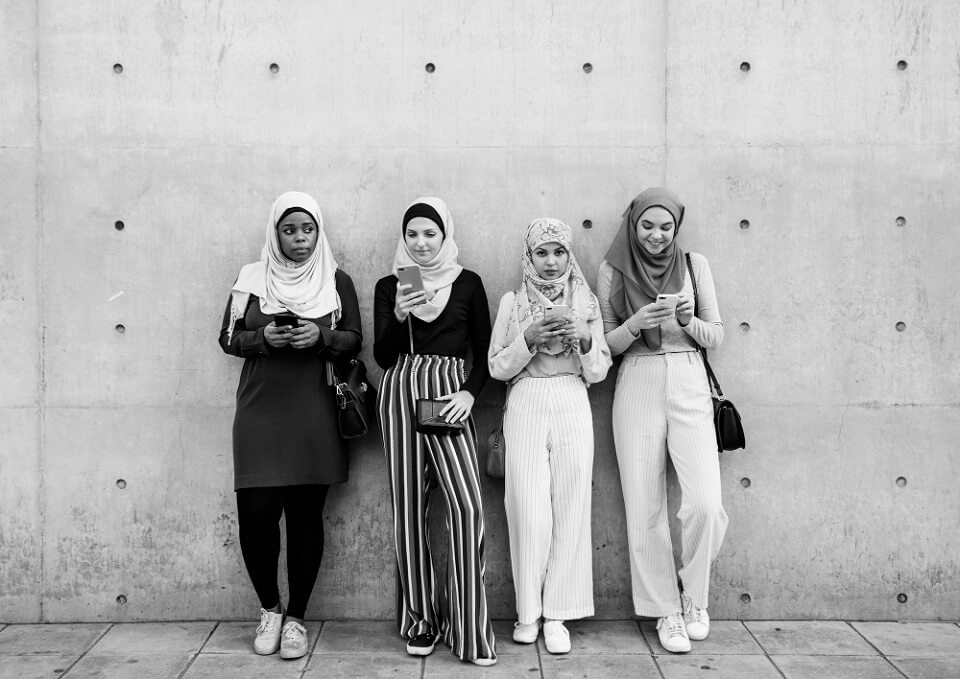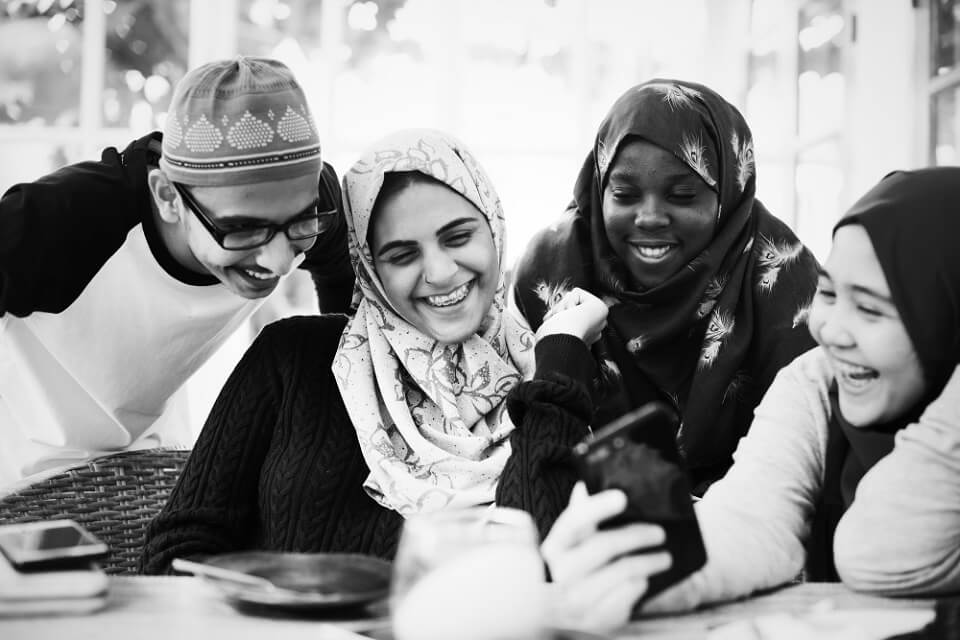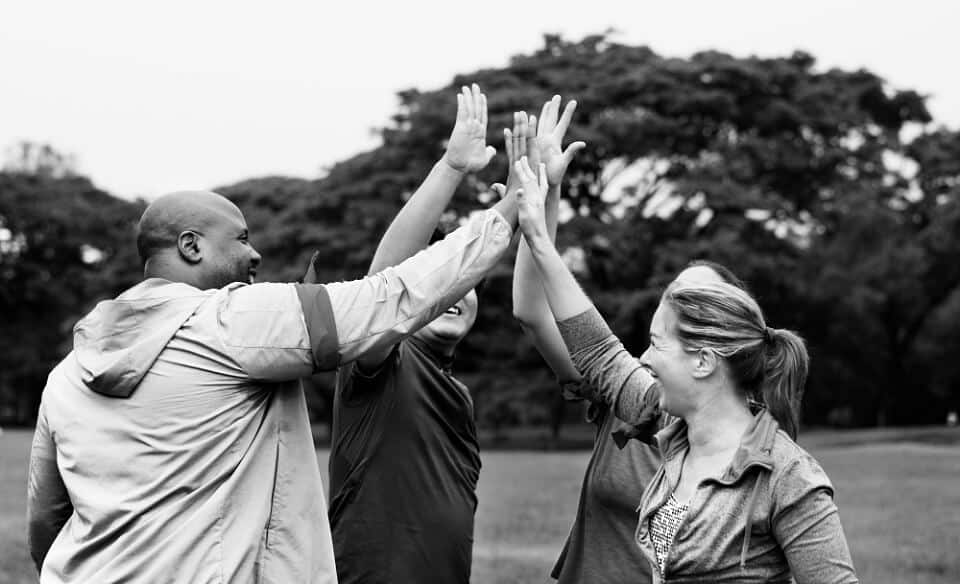From traditional marketing to digital media: breaking the bias of female representation in the Gulf
- BRAND BUILDING
- AUTHOR: KENSHŌ
- DATE: 9 MARCH 2022

We have witnessed an incredible change in marketing to women in the region over the last decade from a traditional marketing and digital media perspective. Today, women in the GCC are not only seen as home makers, but have risen to the ranks of business owners, key decision makers and members of government. With International Women’s Day fast approaching, Kenshō aims to highlight how we can further break the bias of female representation in both external and internal communications.
Women are a fast-growing demographic in economic participation in the Gulf. In fact, Dubai women influence 80% of the purchasing decisions in their households. In Oman, 80% of women say that advertising influences their purchasing decisions. Marketing to women should be a big part of your social media and advertising strategy.
Unfortunately, many brands have taken this to mean that strong, powerful, decision-making women should be brought to the level of their male counterparts when it comes to the way they are marketed to. Thus, creating a further divide. We believe that there is no competition when it comes to the genders, and that successful advertising and marketing will always prevail when the brand understands whom it is marketing to and creates value-based messages for that audience target.
Kenshō is breaking the bias of female representation
As a female-owned, female-led business that represents brands throughout the GCC, Kenshō is proud to lead the charge of creating narratives that appeal to the correct target audiences. The brand is part of the changing dynamic of the region that is seeing the rise of women decision makers, and that requires increasing attention when it comes to message creation and integrated marketing.
Women in the GCC hold a lot of wealth, and even more decision-making power when it comes to spending their own cash, or their families. The next time you’re creating a marketing campaign, remember this. As powerful as women are when it comes to brand building, they are even more powerful in creating a brand’s demise. Women will tell 1-3 people about a great brand experience. Unfortunately, women tell 7-12 people about a bad brand experience, and according to research, can hold a grudge against a brand that’s wronged them for 23 years, retaining and retelling their disappointing experience.
Women have not just become key decision makers; this is not new. However, they have not been marketed to as decision makers in the home or otherwise. The mindset of the industry must, therefore, undergo a transformation. That is what #breakthebias also means for women in this region.
If you need further guidance on creating valuable integrated marketing campaigns or further advice on marketing to women, contact Kenshō to take the lead on your brand.

The importance of differentiating all audiences in marketing
When the subject of female representation is brought up, it is often on the basis of current media representation, particularly when it comes to decision making. In other words, women are directly compared with men. The truth is that marketing is not a competition between different audience types, just simply understanding how to represent them in a way that resonates and meets targets. As already highlighted, messaging must be based on value.
In the past, and this is on a global level, certain products were targeted at men, when it is women, in fact that are the key decision makers. Understanding the nuances has its merits. In this blog, we explore this representation, and why it is important to understand that equal does not always mean the same.
As with any successful brand initiative, understanding your audience is the key imperative in creating successful campaigns that resonate and drive lead generation.
If you’re a marketer, think of the women in your life – friend, sister, wife. How much do they have in common, and how different are they? When it comes to effective marketing to women, it’s time to really understand what women want, how they behave on various platforms, what influences their decisions and to deliver on the ask by creating impactful marketing that makes sense in today’s world.
Traditional marketing to women in the GCC

If you believe that digital is the way to go when marketing to women, you would not be wrong. However, traditional media still ranks highest amongst women across the Middle East and North Africa region, with almost two thirds of respondents in the ‘She Speaks’ IPSOS study confirming this fact.
While it remains true that the Middle East, especially the GCC has the highest internet penetration rates in the world, and high doses of digital media, especially YouTube, are consumed, our e-commerce does not reflect the same. The preference for brick-and-mortar shops remains the mainstay for shopping for the women of this region.
Hence, when considering marketing budgets, brands should consider integrated marketing campaigns that include above-the-line advertising for this region. While we understand that digital media results are easier to discern, there is enough evidence that points to the importance of traditional media platforms in our region when it comes to marketing to women.
The importance of digital media for women in the GCC

While traditional media is important, we’re also witnessing the importance of digital media, especially for the more independent Gen Z demographic. Across the entire Middle East and North Africa region, 69% of women access the Internet, with stats closer to 99% for Gulf women. Of those with internet access, 86% use social media. Facebook continues to reign supreme, followed by Instagram.
The truth is that social media especially is marking the end of the gender stereotype. Women, in general, are more active on digital platforms in Oman, the GCC and on a global scale. This is what will make the trends from 2022 onwards and its impetus cannot be ignored.
Brands need to be more aware about cutting through the clutter with their content than ever before. As much as women are consuming digital media, inspiring ‘thumb stopping’ is a feat unto itself, and the content, the storytelling and the product really has to be outstanding. Having an integrated marketing plan with multiple messages across the board really helps to create a share of voice and, more importantly, share of mind, through the decision-making process.
Understanding equality when marketing to women

When we consider women as a primary target audience in particular, female intuition cannot be ignored. This is a major point of difference. Buying decisions are mostly about intuition. That means the emotions and feelings attached to a product or service in question. When considering face-to-face sales, reading the room (people skills) and verbal ability (the ability to choose your words) are of the essence. When marketers communicate emotion correctly, they are able to influence emotion and drive lead generation.
How this translates to the world of marketing, especially online, is through the use of powerful imagery. However, there is only so much emotion that can be communicated through a static image, but when combined with audio or video elements, the message can be even more effective. As a result, conversion rates increase. Personalized sales messages need to convey emotion, imagination, and empathy.
In short, when selling to the female demographic, messaging should tend towards the more descriptive. The use of softer words and safe language such as disclaimers is a must. Most importantly, messaging that conveys understanding and support tends to convert better with this demographic across the B2C and B2B spectrum.
Breaking the bias by changing your perceptions about today’s modern, female consumer and marketing to women. She is savvy and doesn’t enjoy being pandered to. Instead, create content that resonates, entertains, and educates, and tell brand stories, spark conversations and change the narrative to be more inclusive, and less gendered.
Start building your brand the right way. Subscribe to stay updated on industry insights, the latest trends and mindful communications.
Join Our Community
Add your email to the mailing list to get our latest blogposts.
